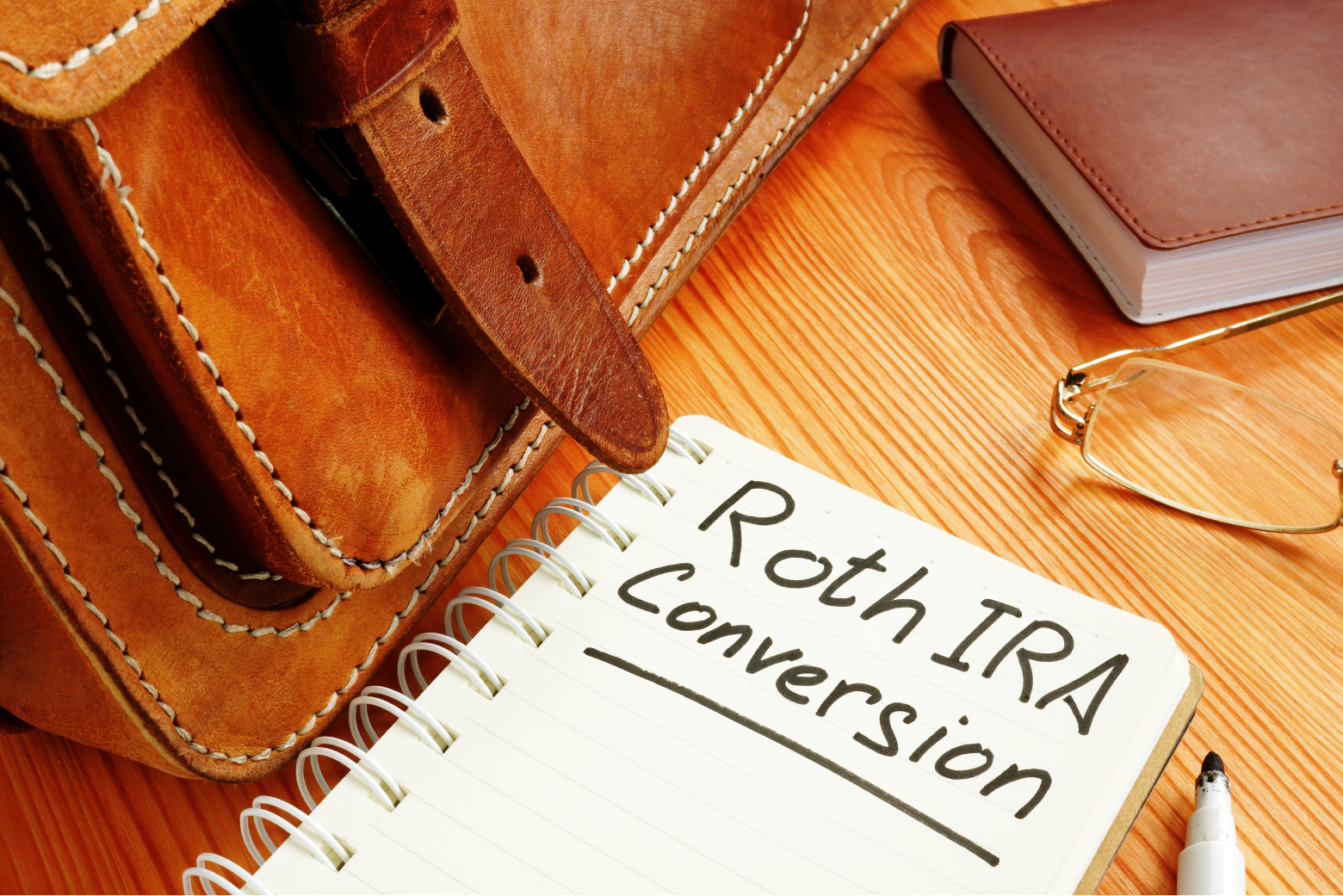Roth IRAs are enticing retirement saving vehicles for one main reason: They deliver tax-free retirement income.
That’s right–tax-free!
Unfortunately for high earners, Roth IRAs are income restricted. The ability to contribute directly to a Roth IRA starts to disappear at modified adjusted gross income (MAGI) levels of $138,000 for single filers and $218,000 for married couples filing jointly in 2023 and goes away entirely for taxpayers with income greater than $153,000 (single) and $228,000 (joint).
Luckily, there’s a workaround: the backdoor Roth IRA .
In a nutshell, the backdoor Roth IRA takes advantage of two concepts:
- Even if your income is above the threshold for receiving a tax deduction for traditional IRA contributions, there’s no income limit for making nondeductible contributions.
- Anybody, regardless of income level, can convert a traditional IRA to a Roth IRA.
A backdoor conversion moves those nondeductible contributions from a traditional IRA to a Roth IRA. The beauty of this process is that by only utilizing nontaxable contributions, the transfer typically can be completely tax-free! This is unlike a regular Roth IRA conversion, which generally results in tax liability. For instance, if you took a deduction when you initially made a traditional IRA contribution, every penny you convert to a Roth IRA is considered taxable income.
Now, just because the backdoor Roth IRA process can be tax-free or low tax in some cases doesn’t mean that it's free from paperwork. So, while a backdoor Roth IRA can be an excellent financial tool for higher-income Americans, it’s important to make sure you document and report the process correctly.
Why do you need to report a backdoor Roth at all?
Any contributions made to an IRA–whether traditional, Roth, SEP, or SIMPLE–are typically reported to the IRS on Form 5498 by the broker that holds the account. However, the two advantages that make backdoors attractive also require special reporting. Individuals need to report nondeductible traditional IRA contributions and traditional-to-Roth IRA conversions with their tax return on Form 8606 – Nondeductible IRAs.
Sorting out the right documents
Before you can correctly report your backdoor Roth IRA, you’ll need to make sure you receive the correct documentation from your broker. If you complete a backdoor Roth in 2023, there are three documents you should receive in early 2024 to file your tax return:
- Form 5498, which shows your traditional IRA contributions made for the 2023 tax year. Be aware that this form doesn’t specify whether your contributions are deductible or not, and this is the big reason you need to fill out an additional form.
- Form 1099-R, which is used to report IRA distributions. Even if you immediately converted a traditional IRA to a Roth IRA, it is still considered a distribution in the eyes of the IRS, and will be reported as such. You may notice that the entire conversion amount is reported as a “taxable amount”. Don’t worry, all traditional IRA withdrawals are reported this way. You should also see box 2b checked, which appears to contradict this, saying “taxable amount not determined”. The tax implications here will be sorted out when you report the transaction to the IRS, which we'll describe in the next section.
- Finally, you’ll receive a second Form 5498 that shows your contributions to the Roth IRA for the year. This should match the amount of the distribution reported on your 1099-R.
Reporting your backdoor Roth IRA
As mentioned earlier, to correctly report your backdoor Roth IRA, use Form 8606 – Nondeductible IRAs.
- In part one of the form, you’ll report that your traditional IRA contribution is classified as nondeductible.
- In part two, you’ll inform the IRS that you converted the entire nondeductible contribution to a Roth IRA.
There are two important reasons for doing this:
First, by reporting the traditional IRA contribution as nontaxable, you’re telling the IRS that the Roth conversion isn’t a taxable event. Note that you still may have to pay some taxes on the conversion if you have other traditional IRA funds from which you did take a deduction, thanks to the IRS’s pro-rata rule. But filling out this form will at least exclude the current year’s nondeductible contribution from taxes.
On that note, be aware that a backdoor Roth might not be the best idea if you already have several other IRA funds. For example, if you already have $95,000 in traditional IRAs and do a backdoor Roth with a $5,000 deposit this year, the IRS will consider 95% of the conversion amount to be taxable, even if you report the $5,000 as a nondeductible IRA contribution. That's the pro-rata rule in action, and if you're worried about how it could affect your tax bill, it's always a smart idea to consult with a tax professional first before any tax decisions.
Second, because you received two Form 5498s, it might look as if you put too much money into IRAs. For example, in 2023, the IRA contribution limit is $6,500 for people under 50, so if you contribute this to a traditional IRA and then convert it to a Roth, it might look like you made a total of $13,000 in IRA contributions. Form 8606 informs the IRS that it was a conversion rather than two different contributions.
Incorrect reporting could result in penalties
It’s important to report your backdoor Roth IRA correctly. Otherwise, the IRS could assume you exceeded your IRA contribution limit for the year, or made contributions to a Roth IRA when you weren’t entitled to do so. Or the “distribution” from your traditional IRA that was reported on the 1099-R could trigger an early withdrawal penalty notice. And while some of these mistakes possibly could be cleared up after the fact, getting your tax documentation right the first time could make your life far easier!

Like what you're reading?
Join the thousands of readers getting stories like this delivered straight to their inbox every Thursday — for free. Give it a spin, enter your email to sign up.
Related Articles

The MEGA Backdoor Roth: How to Save An Extra $43,500 Each Year
Roth IRAs are a favorite among retirement savers who want predictable retirement income. While...

How to Do a Roth Conversion
Roth IRAs can offer a number of advantages as you approach retirement. Money in a Roth IRA isn’t...

Roth Conversions and RMDs
Required minimum distributions (RMDs) are a reality of tax advantaged accounts. Once you pass the...
